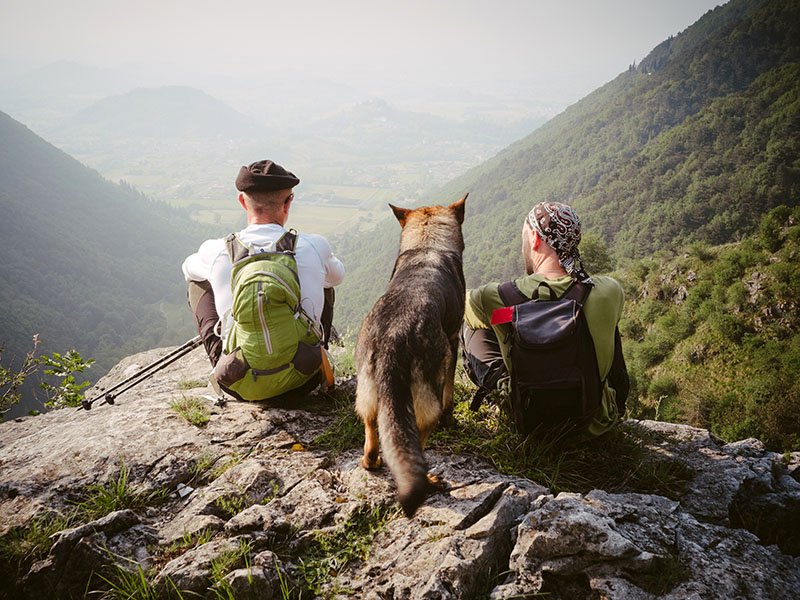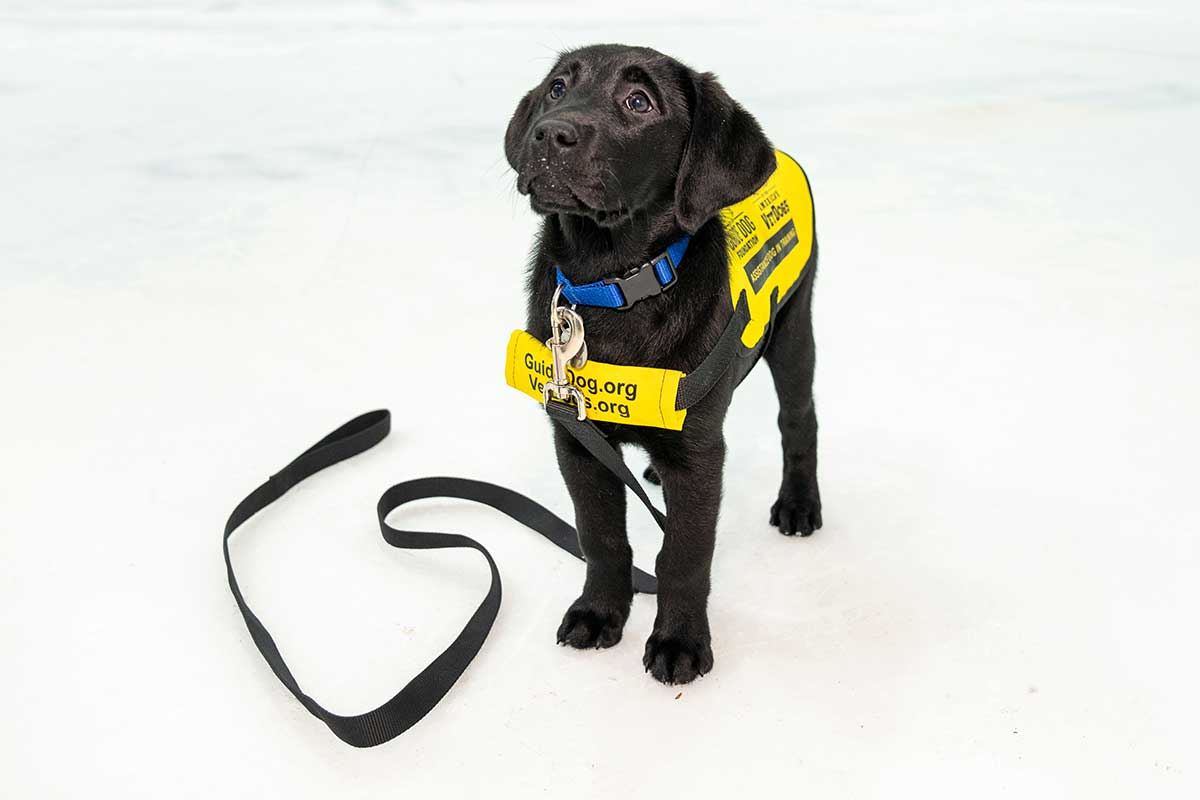
Fall is the best time to explore Northern Virginia, which is full of wilderness to delve into and trails to trek. Our feet are itching to enjoy the beautiful outdoors, and that goes for our pets as well. Involve your dog in your hikes this season, but use precaution during your excursions.
Remember that most dogs act as couch potatoes and may be exhausted if you take them on very long hikes. Allow them to rest and go at an easy pace.
Wildlife like plants, animals and bugs can pose problems to your pet’s health. Martin Tohill, veterinarian and owner of Chantilly Animal Hospital, says: “The risk of mosquitoes spreading heartworm disease is greater out in the country. Ensure your dog is current on heartworm medication. Ticks will be the biggest issue. There are a number of excellent tick protection products, but nothing is perfect. Be sure to check your dog when you are home.”
It is rare that dogs will actually eat a significant amount of any plant, but plants such as poison ivy and wild berries can be harmful to your animal. Keep your pets on a leash around thick forestry to be safe.
When you take your pets on outdoor adventures, be sure to protect them from the heat. Look for signs of heatstroke, which include excessive panting and signs of discomfort. A pet will feel hot to the touch, signaling an elevated temperature. Look out for vomiting and for the animal to be lethargic and dizzy.
That being said, do not let your dog cool off by drinking puddles along the path. “Open puddles and streams can be a source of leptospira, or corkscrew-shaped bacteria, and giardia, a parasite,” Tohill says. “If possible do not let your dog drink from the water; bring water for him.”
Your furry family member may not be the only animal gracing the trails. While actually seeing bears along paths is uncommon, it is best to keep your animal on leash around dense forestry. Having your dog off the leash is fun, but it also means that if you run into wildlife, you will not have control. Even chasing deer or other nonthreatening animals can be dangerous for the dogs if they get lost in the woods or injure themselves in the desperate race to catch up. Virginia is also home to three very venomous snake species: northern copperheads, eastern cottonmouths and timber rattlesnakes.
Where to Go?
Most parks allow dogs, though some do not allow them on certain paths or require them to stay in campgrounds. Some of the best in the NoVA area include:
Manassas National Battlefield Park
Leashed dogs are welcome throughout the 5,100 acres of former Civil War battlefields. Owners of dogs that are scared of loud noises should be cautious of cannon demonstrations that happen during the summer. Entrance to the park is free.
National Arboretum
Located in the District, this city gem is made up of 446 acres of trees, shrubs and gorgeous plant life and welcomes animals. Stick to the 9 miles of paved roads, or you can choose a rugged trail through the woods. Admission and parking are free.
Scott’s Run Nature Preserve
Located just outside the Beltway, Scott’s Run offers 300-plus acres of trails that are great for dogs. The Wide River and Woodland trails make for great running paths. Admission and parking are free.
Potomac Heritage Trail
A multiuse trail that’s a great place to walk your pet, this park is located in Arlington. There’s a lot of wilderness for you and your furry family member to enjoy.
Great Falls
Dogs are allowed throughout Great Falls Park, including the River Trail that will take your dog to the edge of falls and travel through historic Matildaville and the Swamp Trail that explores an ancient terrace of the Potomac River for 1 mile. The park is filled with routes that are wide and well-graded that make for excellent canine hikes.




